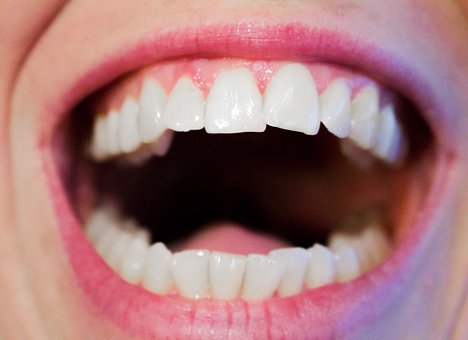Periodontal disease, also known as gum disease, is a common but serious oral health condition that can affect the gums and the bones that support the teeth. If left untreated, periodontal disease can lead to tooth loss, and research has shown it may even impact your overall health. Understanding the stages of periodontal disease, along with the preventive measures you can take, is essential in maintaining not only your oral health but also your general well-being.
What is Periodontal Disease?
Periodontal disease is a bacterial infection that affects the tissues supporting your teeth. It begins when plaque, a sticky film of bacteria, forms on the teeth. If plaque is not removed by regular brushing and flossing, it can harden into tartar, which can only be removed by a dentist or dental hygienist. As the infection worsens, it can cause the gums to swell, bleed, and pull away from the teeth, eventually leading to tooth mobility and loss.
The Stages of Periodontal Disease
Periodontal disease progresses in stages, from mild gingivitis to advanced periodontitis. Recognizing these stages can help you identify and address the problem early, preventing it from advancing and causing more significant damage.
1. Gingivitis (Early Stage)
Gingivitis is the mildest form of periodontal disease and typically results from poor oral hygiene habits that encourage plaque buildup on the teeth. At this stage, the infection is confined to the gums. Common symptoms include:
- Red, swollen, or inflamed gums
- Bleeding gums when brushing or flossing
- Bad breath
Despite these symptoms, gingivitis is usually painless, and the condition can be reversed with good oral hygiene practices, such as regular brushing and flossing. Professional dental cleanings can also help to eliminate plaque and tartar buildup. If gingivitis is left untreated, it can progress to a more severe form of gum disease.
2. Early Periodontitis (Moderate Stage)
When gingivitis progresses, it becomes early periodontitis. At this point, the infection starts to affect the tissues and bone supporting the teeth. The symptoms of early periodontitis include:
- Increased gum inflammation and bleeding
- Formation of pockets between the gums and teeth
- Slight gum recession
Although the damage may still be minimal at this stage, early periodontitis requires professional treatment, such as scaling and root planing, to remove the plaque and tartar buildup beneath the gum line. Regular dental cleanings, proper brushing, and flossing can help manage this condition and prevent it from progressing further.
3. Moderate Periodontitis (Advanced Stage)
As periodontal disease progresses to moderate periodontitis, the damage becomes more significant. The infection has spread deeper into the tissues and bone, and the pockets between the gums and teeth have deepened. Symptoms of moderate periodontitis include:
- Noticeable gum recession
- Increased pocket depths around teeth
- Loose teeth or tooth sensitivity
- Persistent bad breath
- Gum abscesses
At this stage, professional treatment is crucial, and more intensive interventions may be needed, including scaling and root planing, as well as potential surgical treatments to repair gum tissue. The risk of tooth loss increases as bone loss becomes more significant. Without proper treatment, moderate periodontitis can progress to advanced periodontitis.
4. Advanced Periodontitis (Severe Stage)
In advanced periodontitis, the damage is severe, and the infection has spread deep into the bone and tissues that support the teeth. Symptoms at this stage include:
- Significant tooth mobility or loss
- Large pockets between gums and teeth
- Severe gum recession
- Continuous bad breath or an unpleasant taste in the mouth
- Infections or abscesses
At this stage, tooth loss is common, and patients may require more complex treatments, such as gum surgery, bone grafts, or even tooth extraction. Advanced periodontitis can have lasting effects on both oral health and overall well-being, and aggressive treatment is necessary to prevent further deterioration.
Preventing Periodontal Disease
The good news is that periodontal disease is largely preventable. By adopting proper oral hygiene habits and taking proactive measures, you can reduce the risk of developing periodontal disease or halt its progression at the early stages.
1. Brushing and Flossing
The most important step in preventing periodontal disease is brushing your teeth at least twice a day and flossing once a day. This removes plaque buildup and prevents it from hardening into tartar. Use a soft-bristled toothbrush and fluoride toothpaste to gently clean the surfaces of your teeth. Flossing helps remove plaque between teeth and along the gum line where your toothbrush may not reach.
2. Regular Dental Checkups and Cleanings
Regular dental visits are essential to detect early signs of gum disease before it becomes more serious. Your dentist will conduct a thorough examination of your gums and teeth, checking for signs of gum recession, bleeding, or pockets. Professional cleanings help eliminate plaque and tartar that may have built up and are necessary to maintain optimal gum health.
3. Healthy Diet
A healthy, balanced diet can boost your immune system and promote gum health. Vitamin C, found in fruits and vegetables, helps strengthen your gums, while calcium supports bone health. Avoid sugary foods and drinks, as they contribute to plaque buildup and increase the risk of gum disease.
4. Quit Smoking
Smoking is one of the leading risk factors for periodontal disease. It weakens your immune system, making it harder for your body to fight infections, including gum disease. Smoking also inhibits blood flow to the gums, hindering the healing process. Quitting smoking can significantly improve your oral health and reduce your risk of gum disease.
5. Manage Chronic Health Conditions
Certain health conditions, such as diabetes, can increase the risk of developing periodontal disease. If you have diabetes, work closely with your healthcare provider to manage your blood sugar levels. Likewise, conditions like stress and autoimmune diseases may impact your gum health, so it’s important to address these underlying factors.
Conclusion
Periodontal disease progresses in stages, from gingivitis to advanced periodontitis, with each stage involving more serious consequences for your gum and tooth health. By recognizing the symptoms early and seeking professional care, you can prevent the disease from advancing and protect your oral health. Consistent dental care practices, including brushing, flossing, regular checkups, a healthy diet, and lifestyle changes, are the key to preventing gum disease and maintaining a healthy, beautiful smile for years to come.


